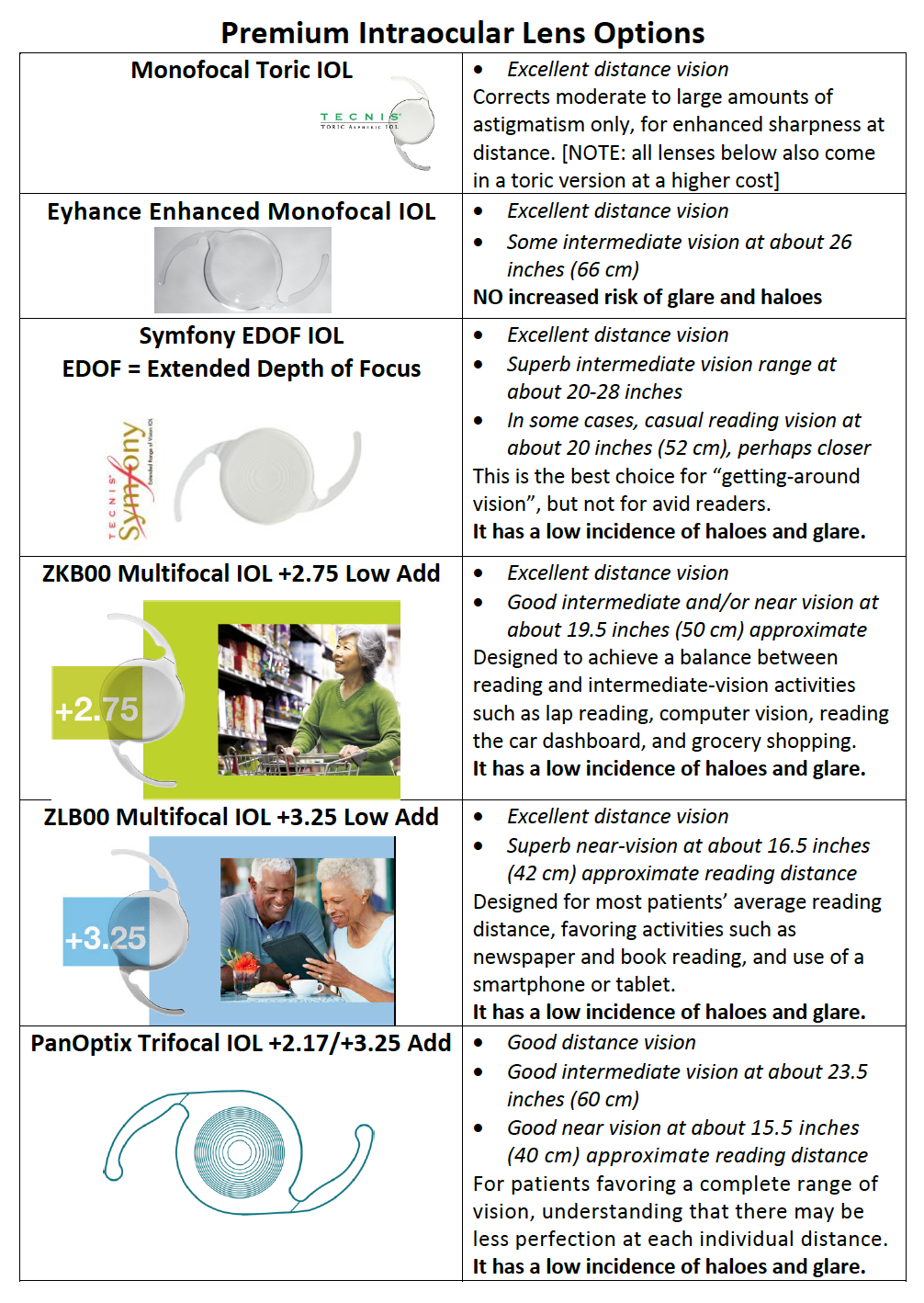 Premium Lens Options
Premium Lens Options
There are several premium intraocular lens (IOL) options that are designed to help decrease your dependency on eyeglasses or contact lenses to see well after cataract surgery. Some lenses are more suited for maximizing patients’ distance vision, while other lenses provide excellent distance vision as well as good intermediate (computer) and near (reading) vision. Premium IOLs such as Toric, Extended Depth of Focus (EDOF), Multifocal, and Trifocal lenses give patients the ability to reduce or eliminate the need for glasses or contacts after cataract surgery.
Toric IOLs and Astigmatism Correction
Most patients have some corneal astigmatism, which is when the cornea is more oblong in shape like a football rather than perfectly round like a soccer ball. Even if you don’t have astigmatism correction in your eyeglasses or contact lenses, you may have significant astigmatism in your cornea which you may not realize because your natural lens often can neutralize this. If this corneal astigmatism is not corrected at the time of cataract surgery, it can affect sharpness of vision at all distances. For patients that have corneal astigmatism, vision is often sharper after cataract surgery when this astigmatism is surgically corrected. This can be done with laser corneal incisions (for mild astigmatism) or with toric IOLs (astigmatism-correcting IOLs). Toric IOLs can be single-vision (for distance only) or combined with any other premium lens technology to enhance intermediate and/or near vision in addition to distance vision.
Enhanced Distance Lens Implants
Enhanced distance lenses provide sharp distance and a small amount of intermediate vision without the increased risk of glare, haloes, and starbursts that multifocal, EDOF, and trifocal lenses can cause. Enhanced distance lenses can provide functional performance for distance and some intermediate vision tasks, especially at a distance of 26 inches or more, but they do not eliminate the need for near-vision correction glasses after surgery.
EDOF, Multifocal, and Trifocal Lens Implants
EDOF, multifocal, and trifocal IOLs give patients undergoing cataract surgery the best chance of reducing (in some cases eliminating) their need for reading glasses, bifocals, or progressive bifocals. EDOF lenses provide an excellent range of vision from distance to intermediate, with some near reading vision. Multifocal lenses come in different powers and are specifically designed to provide excellent distance and near vision, often times with some intermediate vision also. Trifocal lenses are intended to provide good distance, intermediate, and near vision. All of these lenses are available in toric powers that correct for astigmatism as well. Patients may still need eyeglasses for various computer and/or reading activities, such as for the small print on the back of a medicine bottle. Patients may also need readers for poorly lit areas, such as dark restaurants, and highly skilled near vision tasks such as needle-point.
With any of these lenses, there is a slightly higher chance you may see haloes, glare, and/or starbursts, especially in the dark or with nighttime driving. Many patients will see these unwanted symptoms early on, but after weeks or in some cases months these symptoms become less noticable or bothersome, or even completely resolve. If you still experience these symptoms 6 months after your surgery, then they may not resolve. If they are extremely bothersome, you may have surgical options to treat this, so it is best to discuss with your surgeon.
